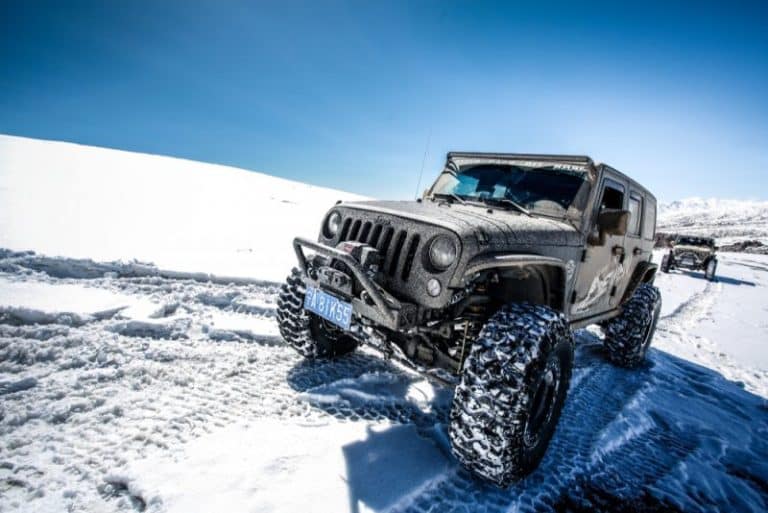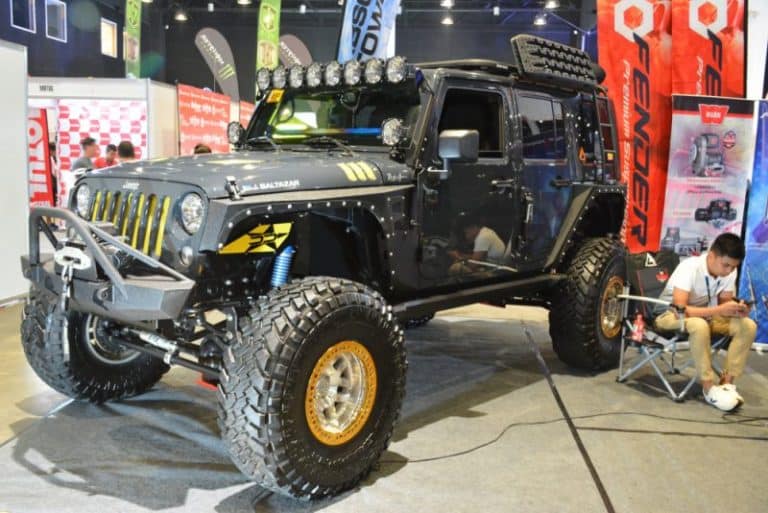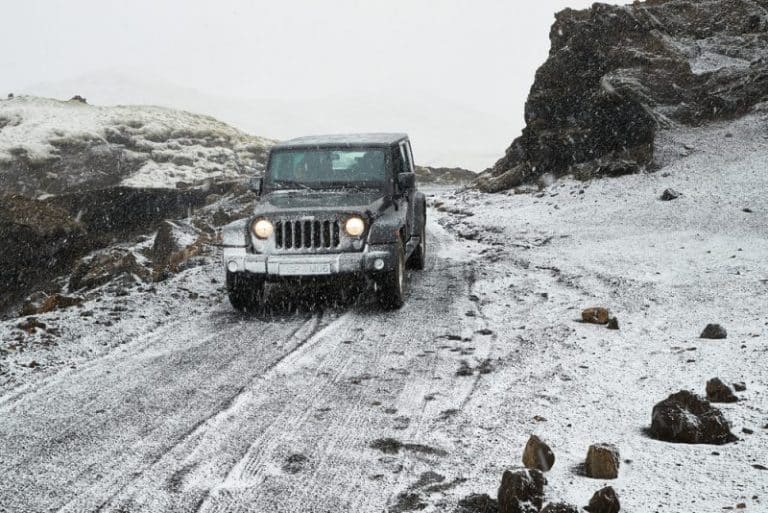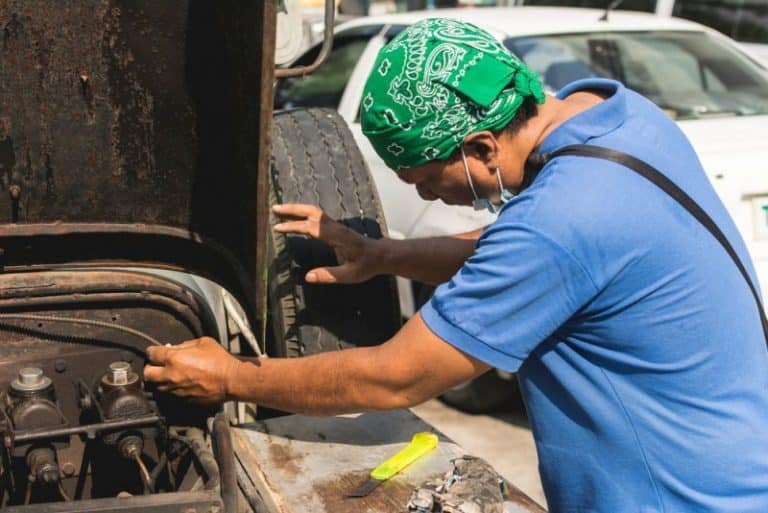How Can I Tell If My Jeep Is Lifted? (Read This First)
Typically, Jeeps are rugged vehicles with amazing capabilities for off-road driving and taking on challenging terrains.
While stock Jeeps are capable enough in these regards, the performances of these cars become further enhanced by lifting them.
Many Jeep owners want their vehicles lifted because of their advantages. However, some can’t tell whether their Jeeps are lifted or not.
Let’s find out then how to tell if your Jeep is lifted.
You can tell if your Jeep is lifted from the observable differences between a stock Jeep and your Jeep. For example, jeep lift kits offer extra height and bigger tires in Jeeps enabling improved articulation and better traction on demanding terrains. So you have a lifted Jeep if it is higher, has improved suspension, and chunkier tires than its model stock.
How Can I Find Out If My Jeep Is Lifted?
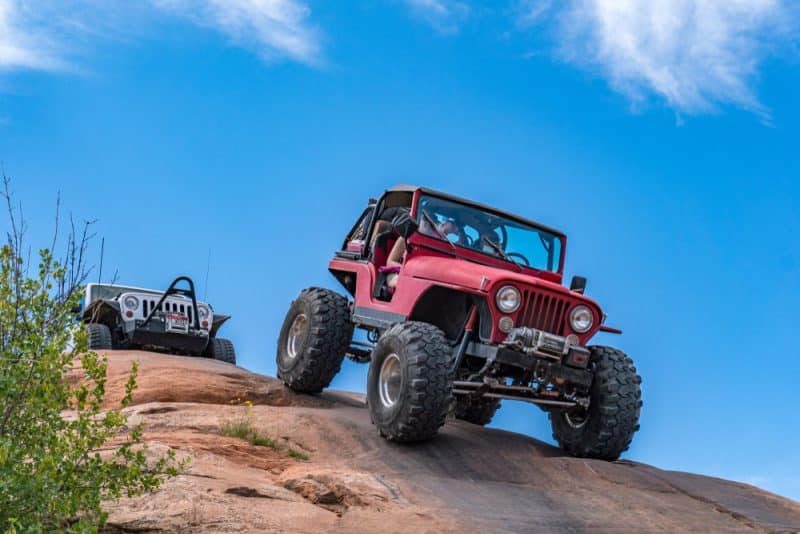
You can find out if your Jeep is lifted by comparing it with a stock of the same model. Lifted Jeeps look different and perform better than their regular counterparts.
That is because the vehicle’s parts included in a lift kit are also changed when that vehicle is lifted.
The most obvious indicator of a lifted Jeep is an increased height. Lift kits change vehicles’ springs and shocks, resulting in inches of added height for such vehicles.
Improved ground clearance and articulation are the results of this extra height. The dimension of a Jeep Wrangler stock spring is 9 3/8 inches from top to bottom.
Therefore, if you measure your spring and its spills over this length, it indicates a lifted Jeep Wrangler.
A lift in Jeeps will also affect the length of the sway bar links. Due to the change in distance from the sway bar to the suspension, you would require longer sway bar links.
Therefore if you have these links longer than stock, your Jeep is probably lifted.
The stock control arms connecting the frame and axles are replaced for flexibility when Jeeps are lifted. In their places come adjustable control arms which make the axles more flexible.
The one available on your Jeep will give you a clue if the vehicle is lifted or not.
From all these, it is pretty obvious that the lifting of Jeeps entails changes in parts of the vehicles. These variations translate to the overall efficiency and improved performance of lifted Jeeps.
Hence, a simple comparison of these parts with those on a stock is the surest way to identify lifted vehicles.
Interestingly, most of these clues are just general indicators of lifted Jeeps. The specifications of individual lift kits provide more details about the availability of lifts on vehicles.
However, these details are still the results of structural modifications made to the cars.
For instance, a rough country lift kit on a Jeep Wrangler JK gives the vehicle the following details:
- A 3.5 inches lift.
- Fender flares are 8 inches higher than those on a stock Wrangler.
- Rock rails are 24 inches off the ground instead of the 19.5 inches on a stock.
- 18 inches of ground clearance. A whopping 5 inches higher than that of a stock model.
- 21 inches trailer hitch height. This dimension is another 5 inches higher than that on a stock Wrangler.
All other lift kits have various specifications and offer different amounts of lifts on Jeeps. If a lift kit is pre-installed in your vehicle, the details will be in the owner’s manual.
One fact remains though that measurement and comparison to stocks remain the surest way to identify a lifted Jeep.
How to Tell How Much Your Jeep Is Lifted?
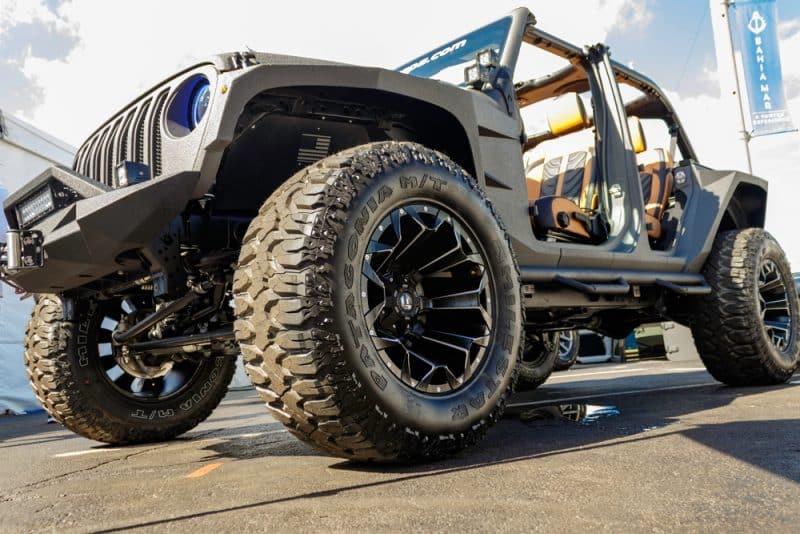
You can tell how much your Jeep is lifted by the lift kit size it possesses. Additionally, some simple measurements will tell you the amount of lift your Jeep has.
You can classify Jeep lift kits into Jeep body lifts and Jeep suspension lifts. Jeep body lifts increase the distance between the Jeep’s body and its frame.
Doing so gives the vehicle 1-3 inches of lift. The Jeep suspension lift includes the short arm lift and the long arm lift.
These lifts give Jeeps more lift heights than the body lift. Suspension lifts offer vehicles with as much as 6 inches of lift.
Therefore, if you have a Body Lift Kit installed in your vehicle, you will have about 1-3 inches of lift. On the other hand, a Suspension Lift Kit will lift your vehicle to about 6 inches.
Measuring the length of your vehicle’s shocks will also give you an idea of your much the car is lifted. For example, the shocks on a lifted Jeep will be longer than the stock shocks.
Therefore, the difference between the standard stock shocks and your Jeep’s shock gives the car’s amount of lift.
Supposing the stock shocks measure 3 inches and your shocks are 6 inches, your car has 3 inches of lift. If your shocks measure 9 inches, you have about 6 inches of lift on your vehicle.
The methods given above are most convenient for determining the amount of pre-installed lifts on Jeeps.
If the lift on your Jeep is factory installed, you can always check the owner’s manual for the lift specifications.
Telling how much lift a lift kit you are about to install gives to your vehicle is way easier.
All you have to do is determine the amount of space between the fender and the center of the wheel. You can do this using a measuring tape twice; before and after installing the lift kit.
The difference between the first and second measurements tells you how much you have lifted your vehicle. How To Tell What Size Lift You Have?
Watch this before lifting your jeep | Jeep Suspension Geometry Explained
Summary
Jeeps are built to undertake the rigors of off-road driving, daring steep angles, and rocky paths. The boisterousness of these vehicles is evident with the installation of lift kits on them.
Lifted Jeeps and their amount of lifts are determined by simple observations and measurements of some parts of the vehicles.

